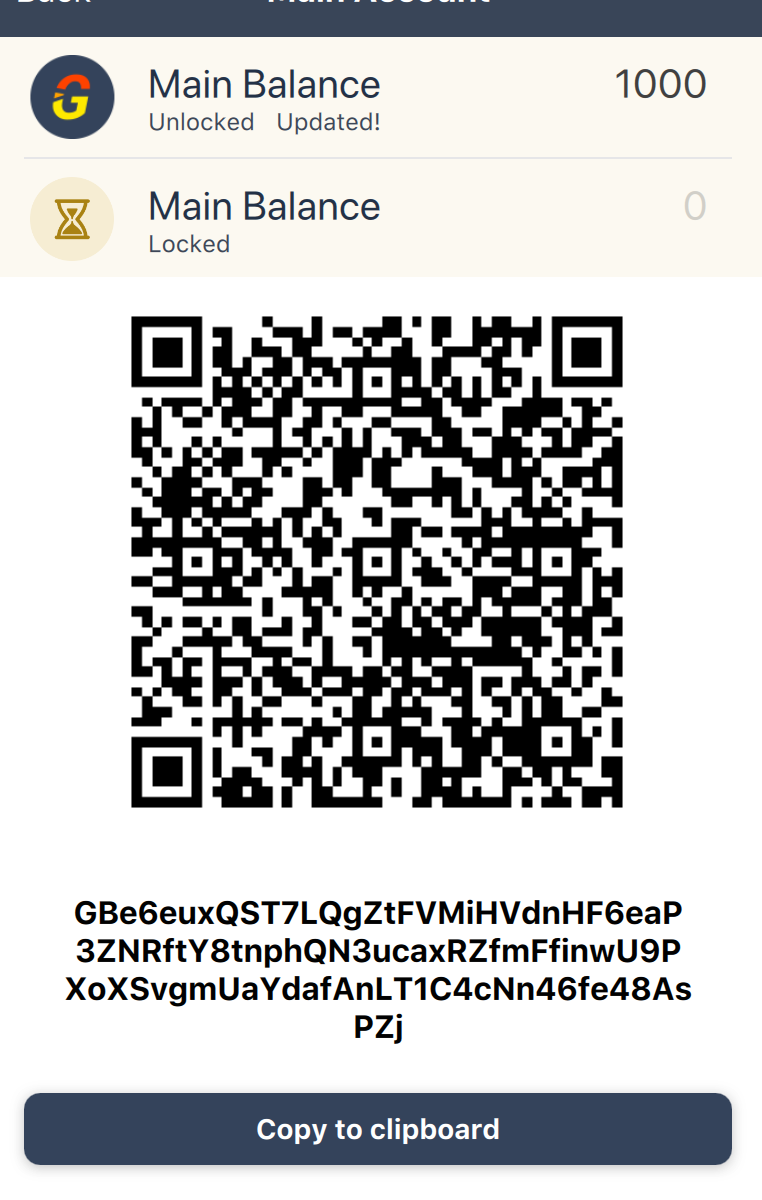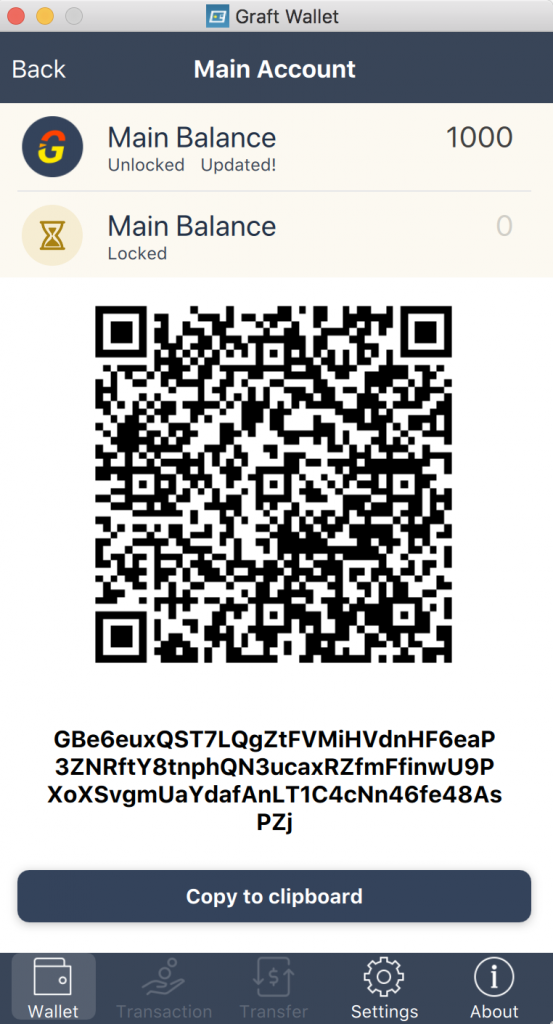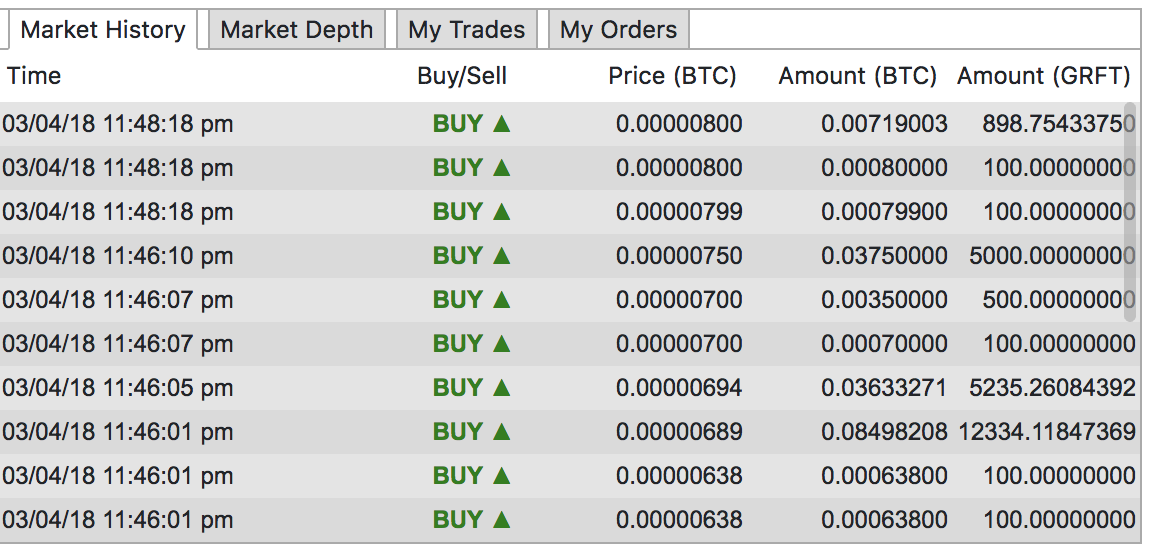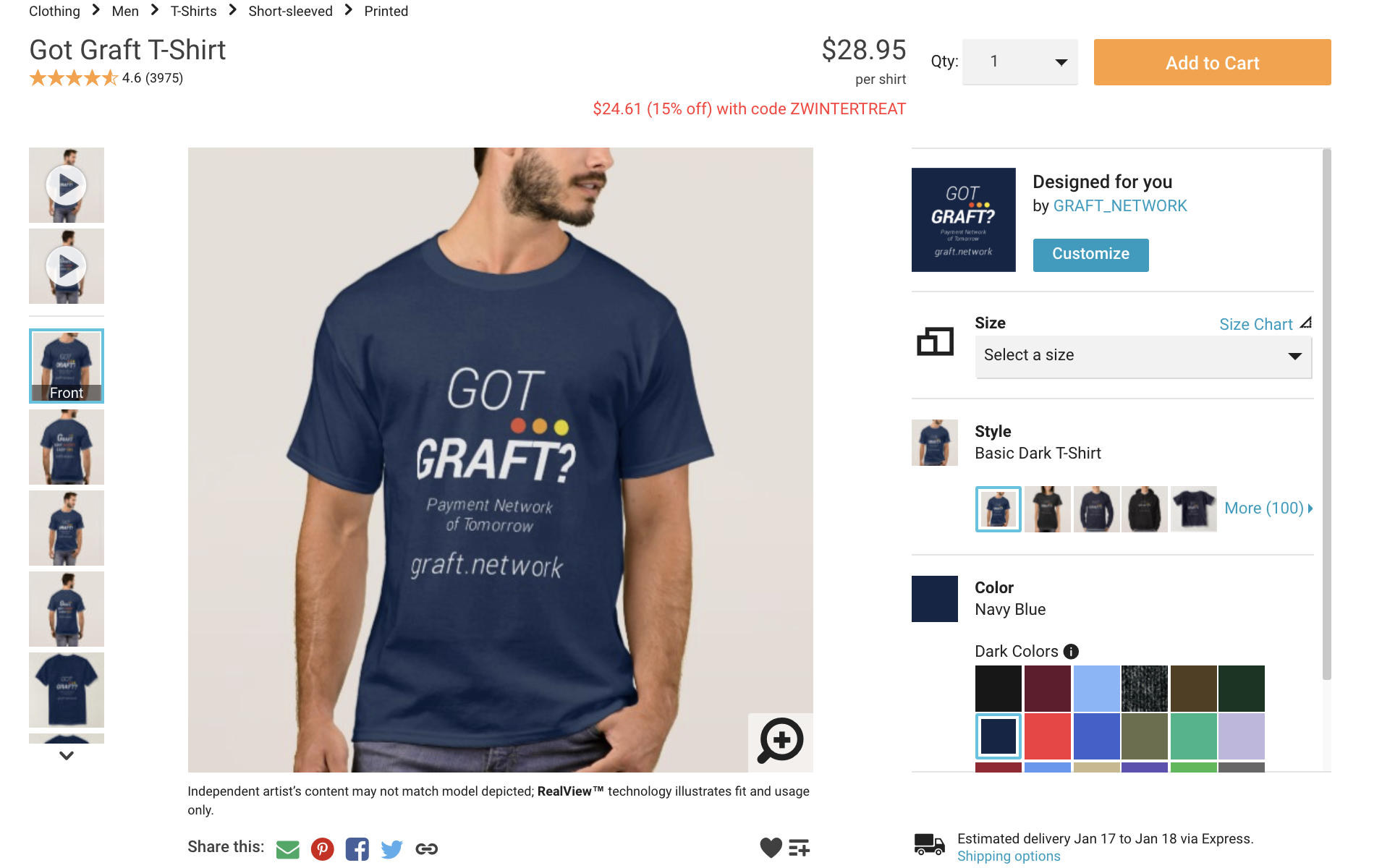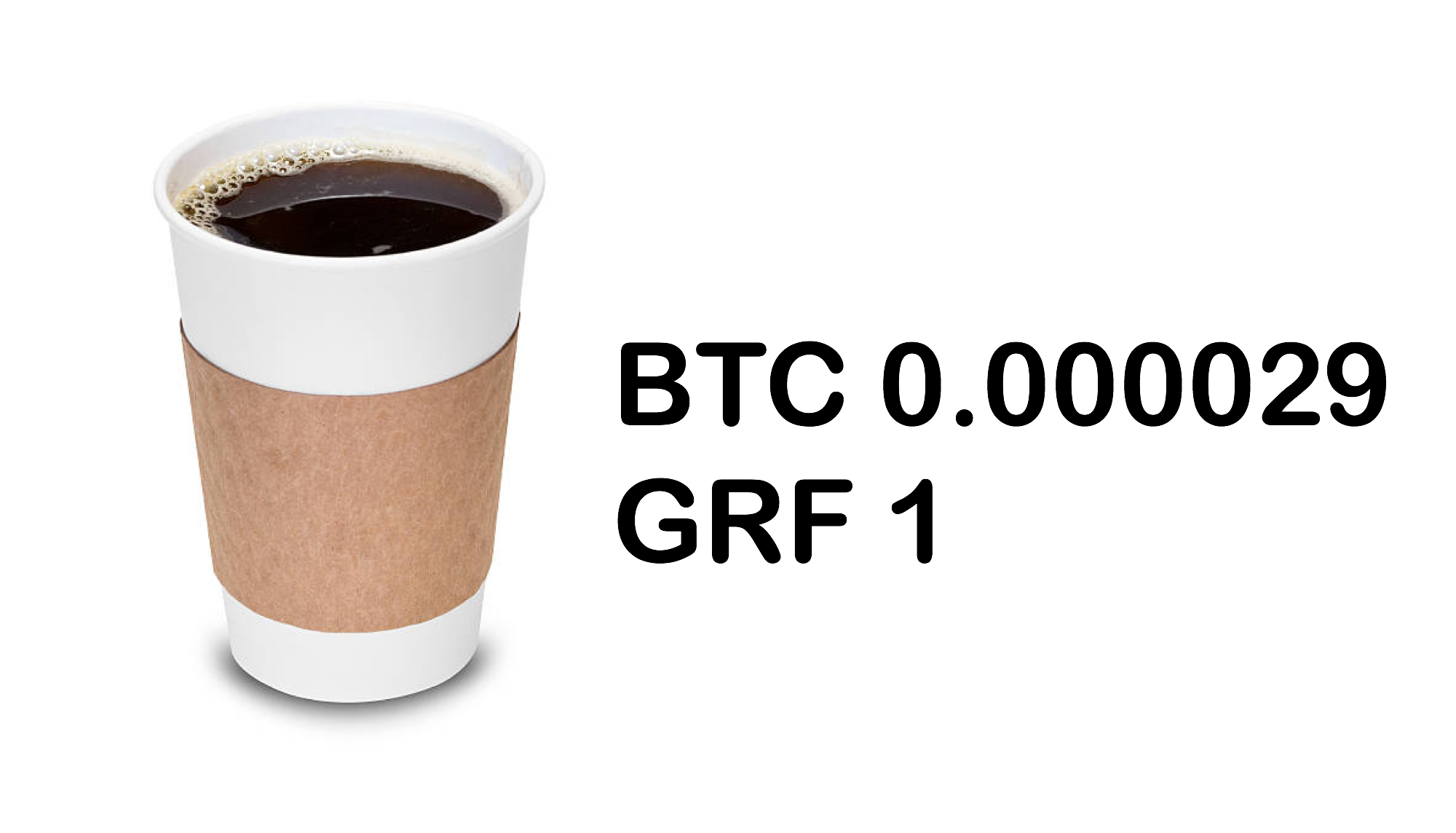GRAFT Anti-ASIC Fork
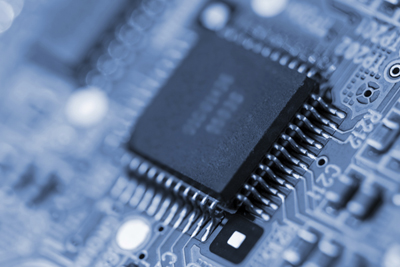 GRAFT team shares the same concerns raised by Cryptonote/Cryptonight community associated with creating a special hardware (ASIC) for Cryptonight mining. We realize that enabling ASIC (Application Specific Integrated Circuit) at this point may introduce a risk to stability, decentralization, and even very existence of GRAFT blockchain. After thorough review we decided to support the anti-ASIC movement and add an ASIC-resistant code in the next fork. We will follow up with more details about the implementation and timelines soon. Thank you for your support, stay tuned!
GRAFT team shares the same concerns raised by Cryptonote/Cryptonight community associated with creating a special hardware (ASIC) for Cryptonight mining. We realize that enabling ASIC (Application Specific Integrated Circuit) at this point may introduce a risk to stability, decentralization, and even very existence of GRAFT blockchain. After thorough review we decided to support the anti-ASIC movement and add an ASIC-resistant code in the next fork. We will follow up with more details about the implementation and timelines soon. Thank you for your support, stay tuned!
Apple Wallet is back!
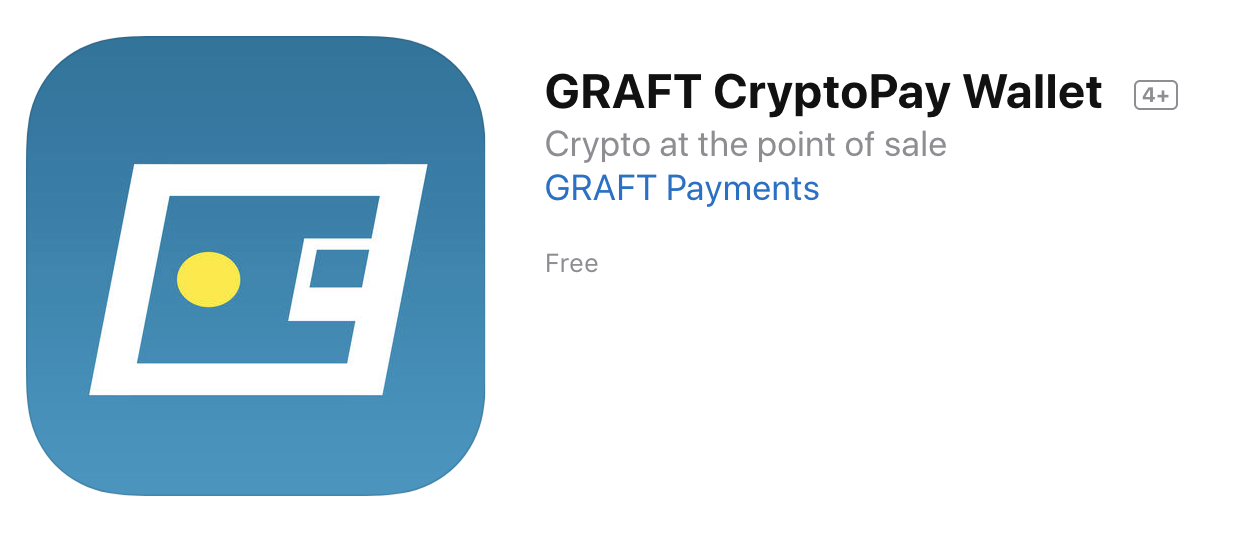 Good news – the Apple wallet is available on iOS again!
Good news – the Apple wallet is available on iOS again!
How does GRAFT Network Eco-system work?
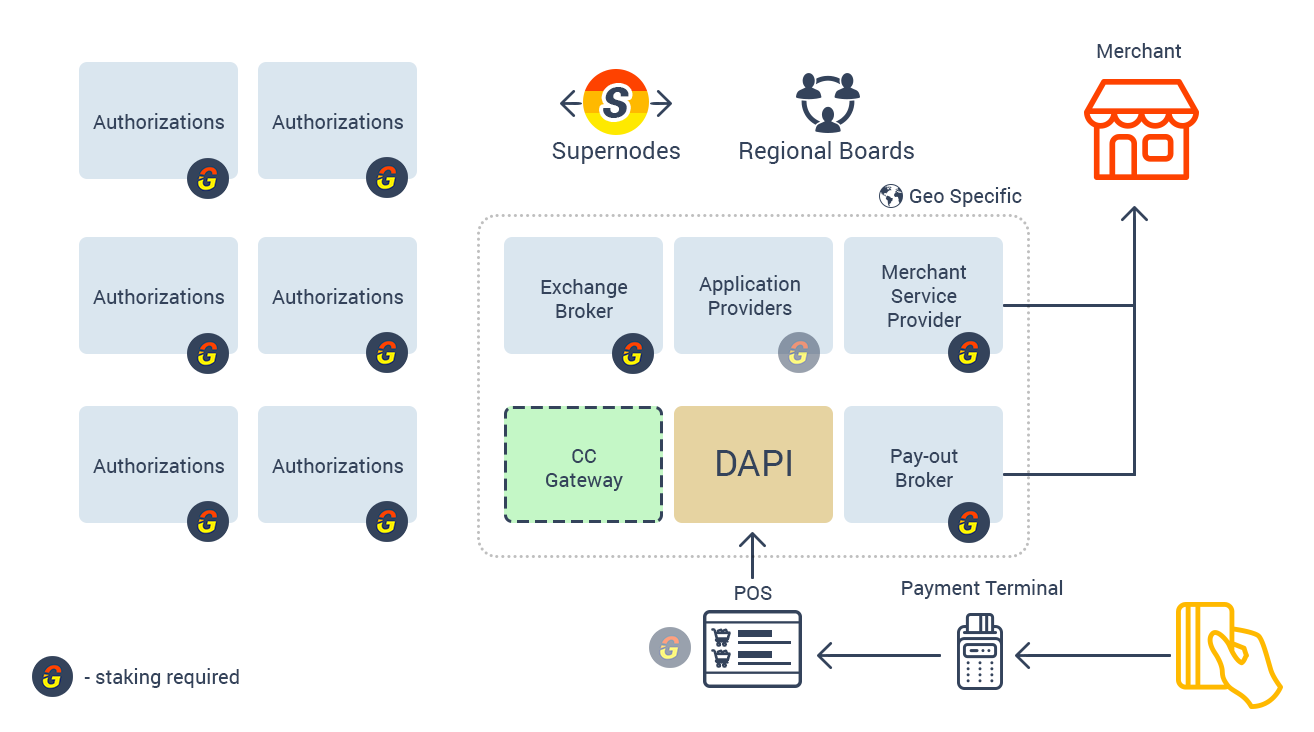 How do merchant service providers, pay-out brokers, application developers, authorization Supernode owners all fit together on the GRAFT Network? How the network is scaled, regionalized, and managed?
Find out!
How do merchant service providers, pay-out brokers, application developers, authorization Supernode owners all fit together on the GRAFT Network? How the network is scaled, regionalized, and managed?
Find out!
Recent Updates in GRAFT Wallets: Send and Integrated Addresses
Send vs. Pay vs. Transfer
It is important to understand the difference between current Send function and future Pay and Transfer functions. To add to the confusion, Send in mobile and desktop wallets is the same as Transfer in CLI wallet. So let’s see why these three functions are different and what they are designed for.
Send (aka Transfer in CLI wallet) is “traditional” transaction between GRAFT addresses. It is implemented by creating a transaction and adding it to the next block on the blockchain. This is slow process which can take from 2 to 10 minutes (depending on current blockchain “traffic” and interval between the blocks). Also, the balance in the recipient wallet becomes “unlocked” (available for next transaction) only after 10 confirmations (10 blocks) which adds another 20-30 minutes. GRAFT Send is similar to bank wire transfer; however, it is still much faster than wire (minutes vs. hours) and cheaper (cents vs. dollars).
The good thing about Send is that it can move GRFT from any address to any address, no matter what GRAFT app you are using, including third party bodies such as exchanges. The downsides are low speed of transaction and the fee paid by the sender in addition to the transaction amount (although GRAFT set a very decent fee which is lower than in most other cryptocurrencies).
Pay is based on GRAFT RTA (real time authorization) technology and conducts a payment transaction between GRAFT wallet and GRAFT POS (point of sale), or any POS compatible with GRAFT or equipped with hardware payment terminal supporting GRAFT. Pay is currently only implemented on RTA testnet and still in alpha phase; it is currently disabled on mainnet. RTA is one of the most significant GRAFT features which facilitates instant payments between buyers and merchants using GRFT and other cryptocurrencies, both at brick and mortar stores and online. GRAFT Pay is similar to credit/debit card payment; however, unlike credit/debit card payment, GRAFT Pay is absolutely secure and private: the identity of sender and recipient, the transaction amount, and even transaction fee are invisible to the public looking at the blockchain.
Main advantages of Pay comparing to Send are instant authorization (within a few seconds) and no fee paid by the buyer (sender) as the fee is paid by the merchant.
Transfer allows limited number of transactions between user wallets free of charge (no fee paid by either sender or recipient). This function is available only to authenticated users, i.e. the users who agree to partially “compromise” their privacy in order to get additional benefits from the network, or to the VChain owners (you can find more info about VChains in the latest version of GRAFT White Paper).
GRAFT Transfer is similar to bank ACH transfer: both are free. GRAFT Transfer, however, is much faster then ACH (seconds vs. hours/days). GRAFT Transfer is scheduled for implementation before the end of 2018.
It is important to mention that all three methods of GRAFT transactions are still based on GRAFT Blockchain which means they provide full security and privacy to both sender and receiver.
What is Integrated Address?
Standard GRAFT Address contains a pair or public spend and view keys packed into a single string using special encoding. This is the standard public address you typically see when you want to receive GRAFT in your wallet:
Standard GRAFT address is 95 characters long and always starts from letter “G”.
Integrated GRAFT Address contains unique Payment ID in addition to the pair of public keys. Although integrated address does not hide your keys or payment ID from public view, it is always different because of the different payment ID. Many exchanges require using integrated address in order to top up the balance. GRAFT Integrated address is 106 characters long and also always starts with letter “G”.
GRFT is now tradable on TradeOgre.com
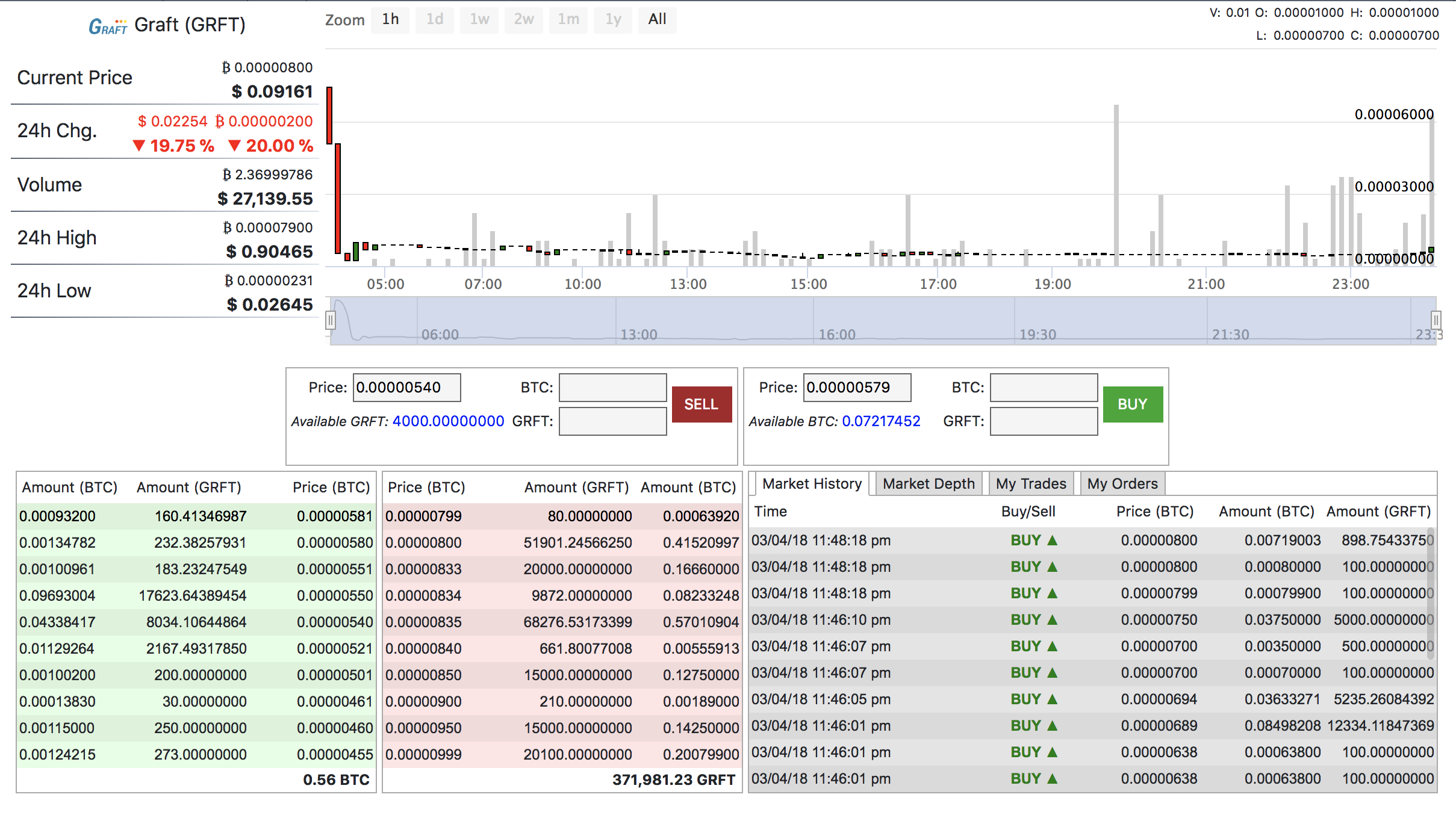 Well, we can’t say we planned on it, but GRFT is now tradable on TradeOgre exchange.
Well, we can’t say we planned on it, but GRFT is now tradable on TradeOgre exchange.
Our focus exchange-wise has been on getting a higher tier exchange that can be a solid part of the GRAFT eco-system for in-network exchanges; however, since GRAFT is a public, decentralized blockchain, if a new exchange that needs to gain some traction in the market decides to list it, there’s little that we can do to stop them. This is what happened with TradeOgre* – they have unilaterally decided to list GRFT, so we woke up to the fact that GRFT was tradeable.
While it came as a surprise, the fact that GRFT is now tradeable allows people who were in for a quick turnaround to get out quickly. We don’t see and never positioned GRAFT as a “turn a quick profit story” so we’re relieved to see the balance shift back to the folks who appreciate GRAFT for its long-term potential.
*TradeOgre is a new budding exchange with little real history, so if you decide to trade, please do so at your own risk.Important Changes in GRAFT Design
With that said, we decided to make the following changes in RTA (“real time authorization”) design:
1. “Decouple” PoW and PoS, so the full supernode will require only the stake (PoS), effectively eliminating the requirement to mine a block in order to run the full supernode. The full supernode will only require a stake (50,000 GRFT) in order to be eligible for processing RTA. We modify the authorization sample selection algorithm so instead of looking at recent mined blocks it will compare the hash of the supernode’s PoS wallet with the hash of the last mined block (height – 30). The main idea here is that the selection is random while the result is deterministic for anyone who calculates the formula. The Tx fee is still equally distributed between the members of the authorization sample; the miner also receives the share of the fee.
2. Introduce 4-tier stake model where a higher tier has a greater chance to be selected into authorization sample, while the selection process is still random.
50,000 GRFT – tier 1
90,000 GRFT – tier 2
150,000 GRFT – tier 3
250,000 GRFT – tier 4
Each tier participates in a random selection of 2 sample supernodes (a total of 8 full supernodes). Thus, naturally, tier 4 supernode has more chances to be selected due to the limited number of tier 4 supernodes. “Empty” spots are filled by the higher level tiers (or lower in absence of higher). This algorithm is also adaptive as it will “regulate” the average number of full supernodes on each level.
3. Allow delegated stake. Balances from multiple wallets can be “delegated” to a single full supernode in order to form a stake significant enough to run a full supernode. The earnings are distributed between the wallets according to their stake share. Minimum balance for delegated stake is 5,000 GRFT.
4. Introduce 2-tier transaction fee. The RTA (“instant confirmation”) Tx fee will be set to 0.5% of Tx amount or 0.01 GRAFT, whichever is greater. RTA transaction is used for real time point-of-sale purchases, in store or online, similar to credit/debit card payments. The regular (“slow”) transfer fee will remain the same: 0.1% or 0.01 GRAFT, whichever is greater, for micropayments (Tx amount less than 1,000 GRFT), and Log(1000) of Tx amount – for Tx amounts greater than 1,000 GRFT. This transaction type is used for transfers between accounts, similar to ACH bank transfers.
Although these changes may resemble some existing implementations of PoS and masternodes, GRAFT solution is still a unique combination of most private blockchain protocol (CryptoNote), advanced principles of PoS and multi-tier networks, and new approach to crypto payment processing with features like low Tx fee, the fee charged to the recipient, functional separation between the Wallet and Point-of-sale apps, various retail transaction types, service brokers, and more. GRAFT development team has already started design and implementation of all the features and changes above.
Sample Earnings / ROI Calculations
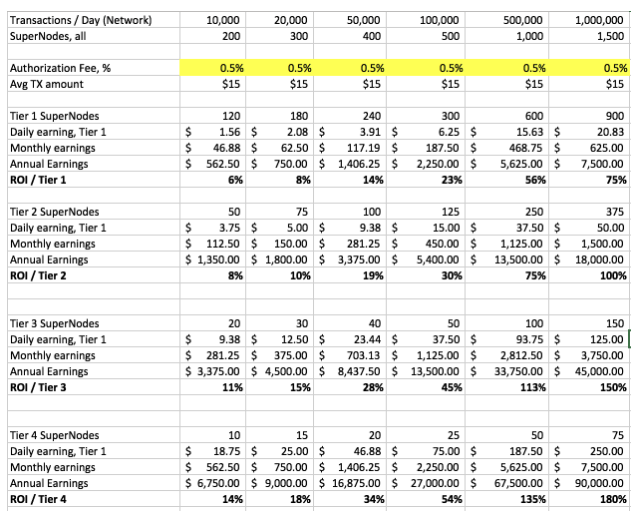
As can be seen from this calculator, the full supernode income depends on 1) number of transactions in the network, 2) number of full supernodes in the network, 3) average transaction amount, and 4) the stake tier of the full supernode.
The following were the assumptions for these calculations:
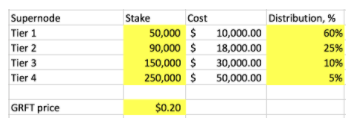
Additional Income Sources for Supernodes
In addition to transaction fees, the full supernode owners can also charge Service Broker fees. Service Broker fees are the fees that customers pay to the full supernode owner in return for Service Level Agreements (SLA) and DAPI access. These fees can be metered or flat, depending on the business arrangement the supernode owner wants to offer. More on this later…
Changing symbol to GRFT and grf:token clarification
*The change was first announced on Telegraph and other social media channels around Jan 23, 2018.
To further clarify naming convention, grf:token is a NEM token that was used to transfer tokens to presellers. grf:token was issued pre 1:100 split, so the owners of grf:token receive 100 GRFT’s for 1 grf:token during the exchange.
Get Into Gear! GRAFT Gear :)
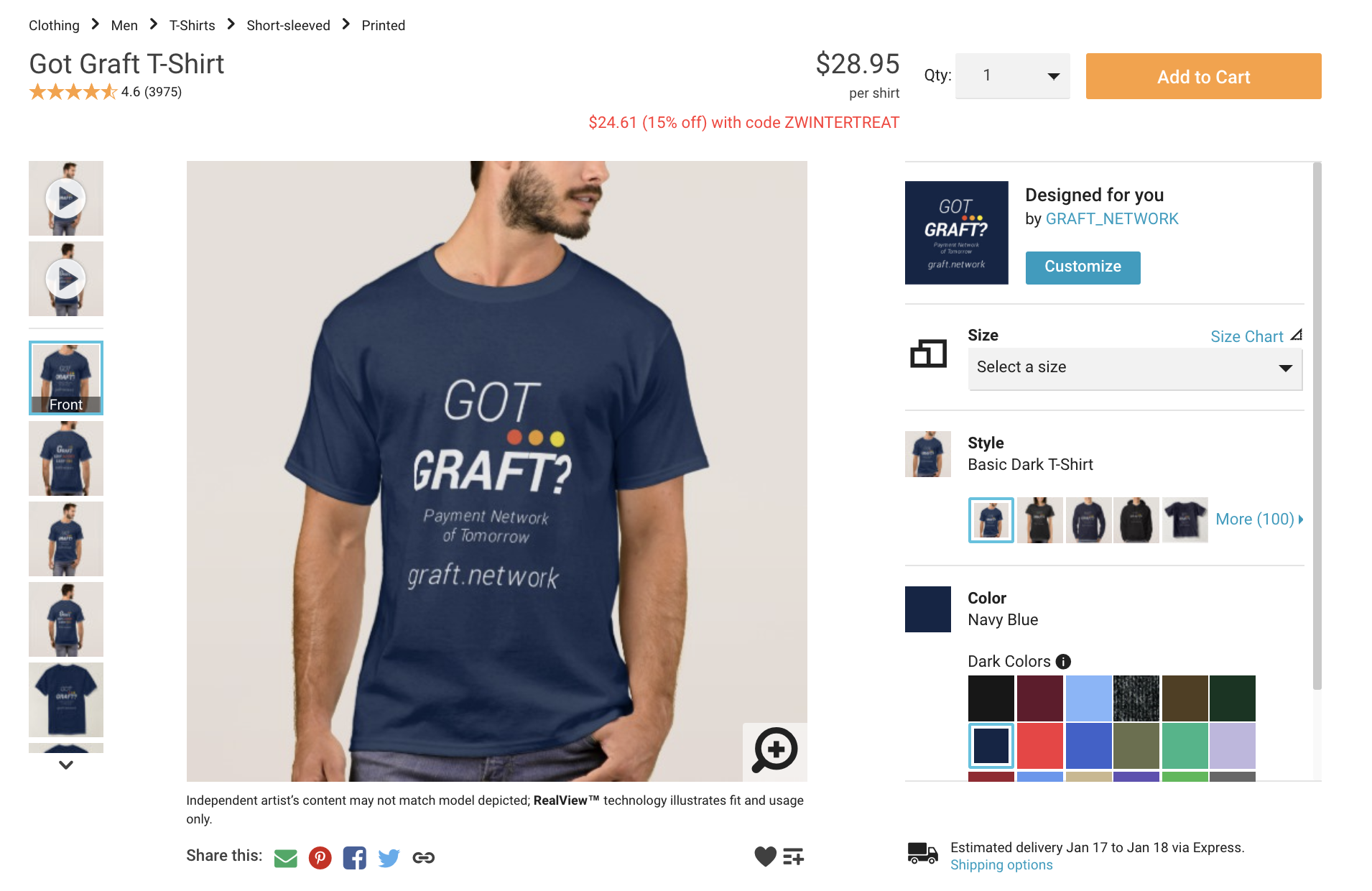
You like GRAFT project and want to show your support?
Get your GRAFT gear on Zazzle, wear it proudly, and make some GRF in the process!!
Read about GRAFT Affiliate Program
Happy Friday!
1:100 Split
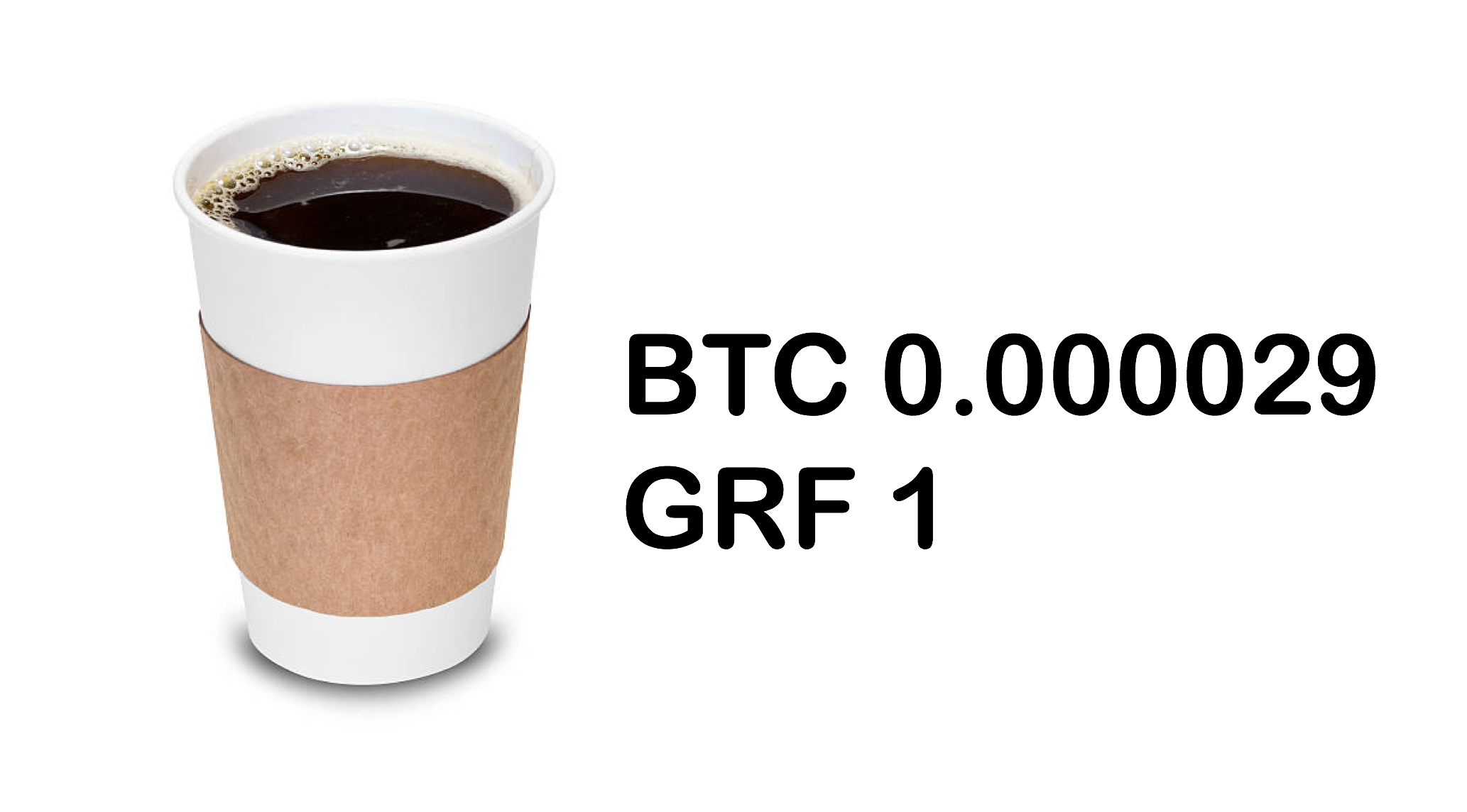
What’s the difference between 0.01 and 1? When it comes to a price of cup of coffee, the difference is pretty substantial.
Over the course of the last month or so, we’ve been talking to users, customers, and potential investors, it became clear that one of the things that bothers people about Bitcoin and other major “investment” cryptocurrencies is that they always require a calculator when trying to pay for anything, as the numbers have a lot of .00 in front of them, with the situation likely to get even worse.
Since we’re targeting the retail segment with GRAFT, we thought it’s important to pay attention to the usability at the point of sale. Even though GRAFT is initially intended to be a “hidden” currency, facilitating a payment using one type of currency into another, longer term it’s possible that it will become more visible, and if it does, dealing with whole number is a whole lot easier than dealing with a lot of decimals.
As an added bonus, this makes the purchase price psychologically more palatable to the investors.
After weighing all pro’s and con’s and doing testing to the algorithms to confirm feasibility, we have decided to go forward with the change.
We’re keeping everything else (emission formula, coin distribution percentages, and valuation) the same, just multiplying the size of emission by 100.
If you have received grf:token so far as part of the Presale, service, or bounty programs, we will apply the split at the time of conversion to the GRF coin.












